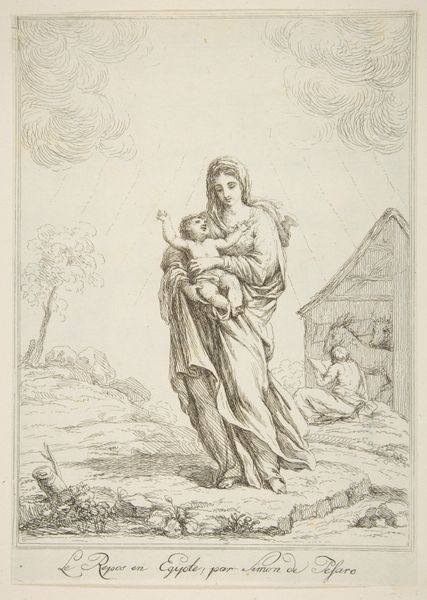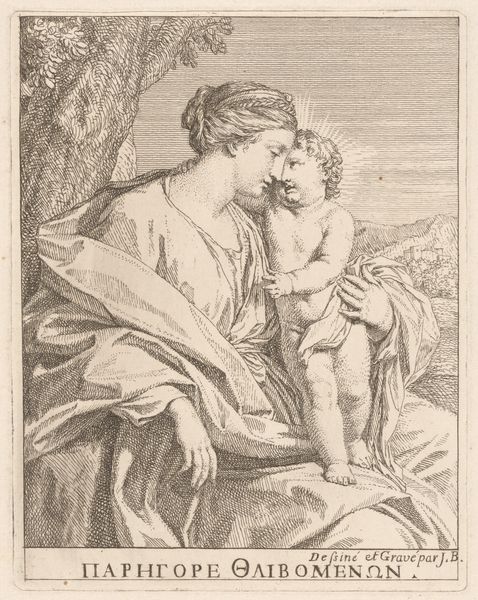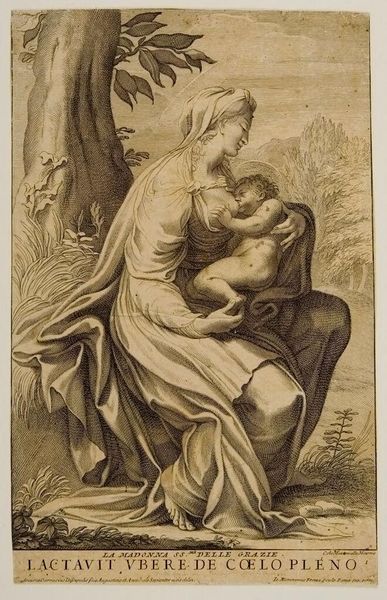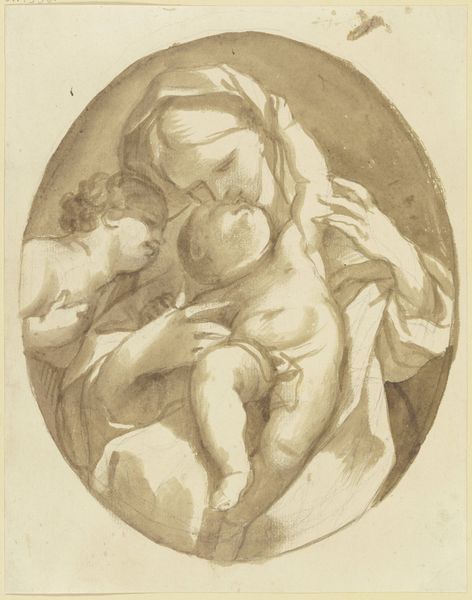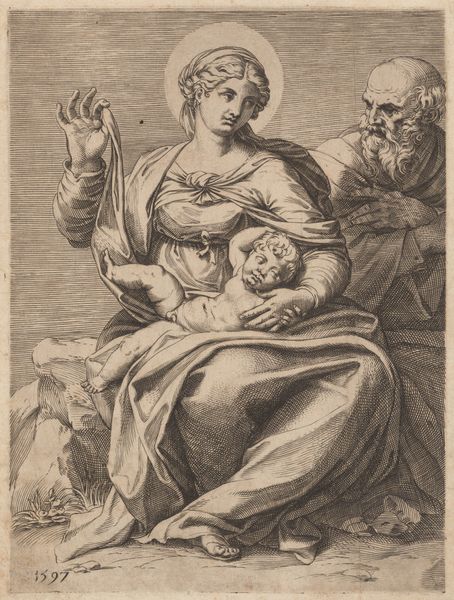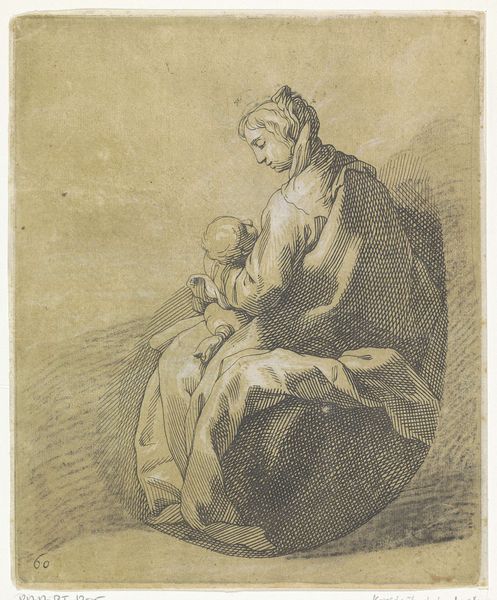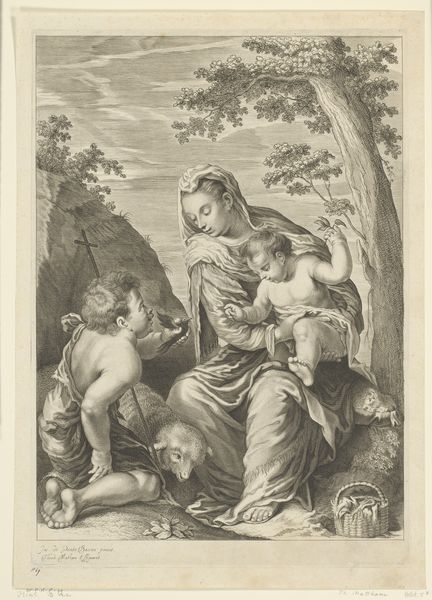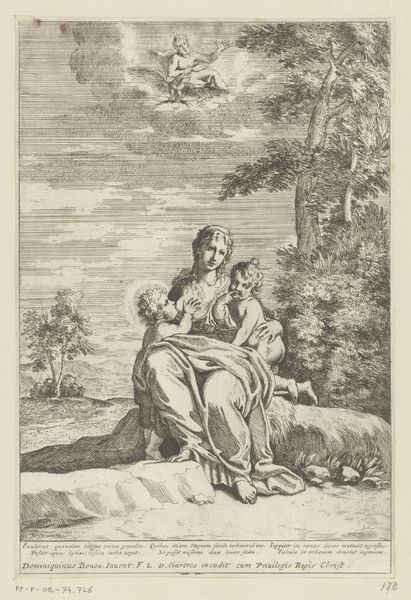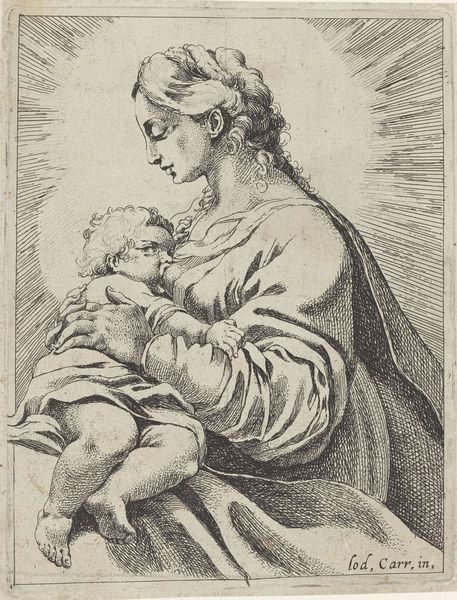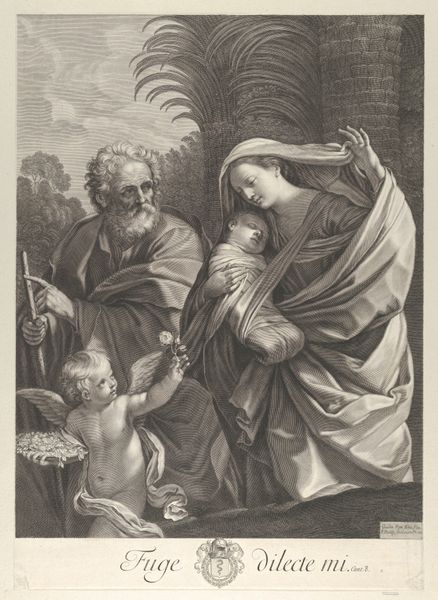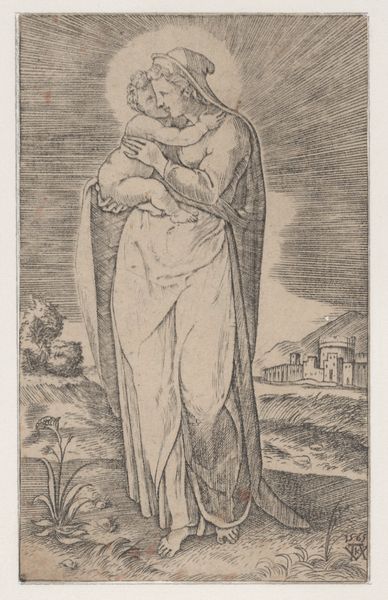
drawing, paper, pencil
#
portrait
#
drawing
#
figuration
#
paper
#
madonna
#
pencil
#
history-painting
#
northern-renaissance
Dimensions: 15 3/16 x 9 7/16in. (38.6 x 23.9cm)
Copyright: Public Domain
Curator: Standing before us is "Virgin and Child," a drawing made between 1750 and 1799 by Giuseppe Cades. It’s currently housed here at the Metropolitan Museum of Art. Editor: It’s quite striking; the way the soft pencil evokes such tender forms! The Madonna's drapery appears almost palpable, contrasting the smooth, unmarked paper surface. Curator: Indeed. Cades, positioned within the Northern Renaissance tradition, seems deeply engaged in exploring the idealized image of motherhood through a historical lens. It prompts considerations about the cultural construction of motherhood itself—how it intersects with power dynamics, religion, and societal expectations within that historical moment and our own. Editor: I’m curious about the choice of paper and pencil. Why this emphasis on such humble materials? Is Cades drawing attention to the process of artistic labor itself? Was it because the pencil gave him room to rework some sections over and over, such as the drape that covers the figure of Madonna? Curator: The drawing highlights a distinct shift in gendered representations—away from solely divine attributes and towards an accessible humanness that challenges rigid power structures. Her downcast gaze evokes vulnerability, while simultaneously reflecting a protective strength indicative of a maternal bond. Editor: Perhaps Cades deliberately used these modest materials to democratize the image. By avoiding precious pigments or luxurious canvases, he may have aimed to produce a work that could be more easily reproduced and circulated, reaching a wider audience beyond the elite. It looks almost like a preparatory drawing with many attempts for each line to me. Curator: And note how the soft, diffused light adds to this sense of gentle humanity, reflecting, perhaps, the changing role of women and mothers in 18th-century society, where feminine ideals were increasingly associated with domesticity and nurturing rather than overt power or overt religious association. Editor: Examining the artwork’s materiality alongside its historical context adds layers of meaning. It gives insight into Cades’ artistic process. It forces us to ask critical questions about the art market and distribution of artwork, the ways artistic labour and available materials affect image creation. Curator: Absolutely. The Virgin and Child prompts a larger conversation about the societal roles projected upon women. Editor: Looking at its pencil lines, I consider Cades' access to these very simple but accessible art-making tools. Curator: The pencil and paper allow access to different meanings that tell much about both, society and the figure they depict.
Comments
No comments
Be the first to comment and join the conversation on the ultimate creative platform.
